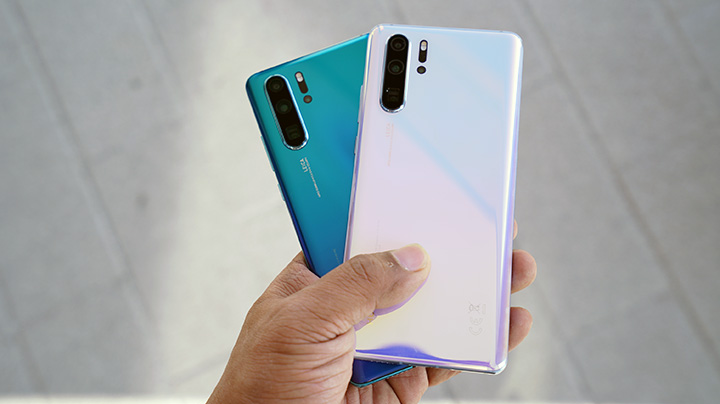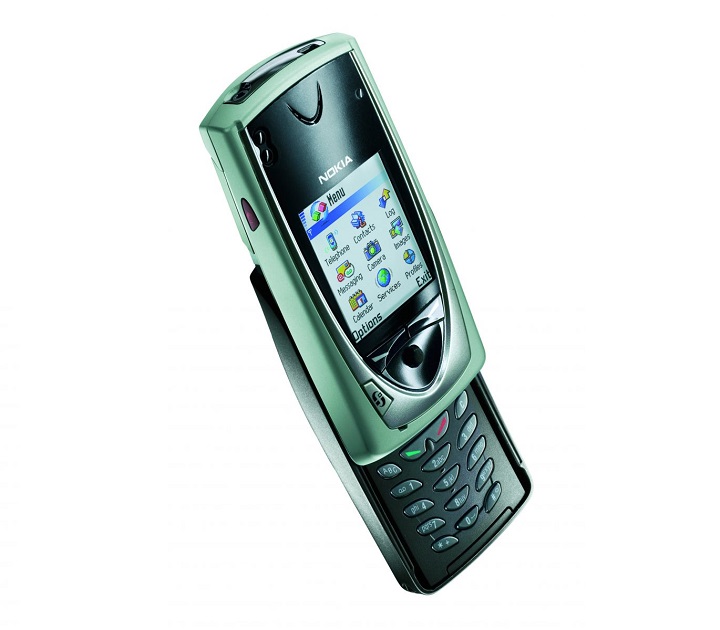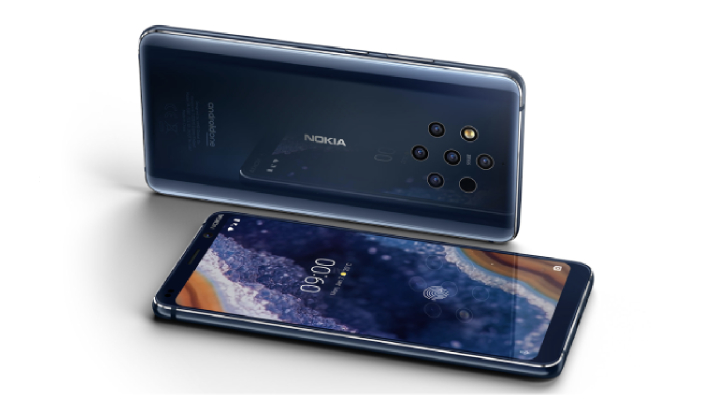Smartphones have come a long way ever since its first generation. Before we had all these new punch-hole cameras, triple rear camera setups, full-screen displays and all, we had flagship devices that only had one camera and was already considered high-end at the time of its release. Have a look at the first generation and current generation of flagship smartphones from a couple of brands!
Table of Contents

Apple first released the iPhone in the year 2008. It featured a 3.5-inch display, with incredibly thick top and bottom bezels. It only had a 2MP rear camera and no selfie camera at all. The first generation iPhone also had a physical home button and it didn’t have any fingerprint scanning nor face unlocking capabilities yet.

Fast forward to 2018, Apple’s iPhone is already on its tenth generation. Released in three versions, there’s an iPhone XR, iPhone XS, and iPhone XS Max. Featured in this article is the iPhone XS Max. Compared to the first generation iPhone, this one has a display that measures 6.5 inches and almost has no bezels surrounding the screen. It has a notch where the 7MP selfie camera resides. Also note the lack of a physical home button, as the iPhone XS employs an in-display navigation. The newest generation also now has two rear cameras, instead of just one from the first generation.

First released in 2010, Samsung’s first generation of the Galaxy S lineup is a pretty far cry from the current generation. The first Galaxy S sported a 4-inch screen and a 5MP rear camera. It had about 512MB of RAM, and it had a 1,500mAh battery capacity which was already huge at the time of its release.

This 2019, Samsung launched the latest member in the Galaxy S series, the Galaxy S10. Samsung introduced three versions for this lineup, namely, the S10E, S10, and S10 Plus. What we have here is the S10 Plus, the largest of the three. Sporting a 6.4-inch screen, the S10 Plus has almost no bezels around the display, has a dual punch-hole camera setup, and three rear cameras.

Huawei’s P series of flagships was first launched under the company’s Ascend brand. Around 2015, Huawei dropped the Ascend branding from the lineup’s name, shortening it to P series. The first one, named Ascend P1, was released in 2012, with a screen measuring at 4.3 inches. It obviously had a thicker top bezel, while the lower bezel had the navigations buttons on it. The device had a 1.3 MP selfie camera, while on the rear sits an 8MP camera.

Launched last March 2019, the newest members of the P series are the P30 and P30 Pro. Taking a look at the P30 Pro, it’s pretty much different from its oldest sibling. The P30 Pro has a 6.4-inch display, with a small notch on the top that houses the 32MP selfie camera. On the rear, there’s a triple camera setup that consists of a 40MP + 20MP + 8MP shooters. Different from the first member of the P series, the P30 devices have an in-display navigation system.

In 2011, Xiaomi first announced the Mi1 that featured a display measuring at 4 inches. Like most smartphones during that time, the Mi1 also had thick bezels surrounding the screen. It had its navigation buttons on the lower bezel, the Xiaomi logo and a 2MP selfie camera sat on the upper bezel, while on the rear it housed an 8MP shooter.

For the latest generation of Xiaomi’s flagship smartphone, the Mi 9 was first launched last March 2019. With a display height of 6.39 inches, the Mi 9 has a drop notch, slim upper and lower bezels that dealt away with the first generation’s Mi logo and navigation buttons, and almost has no bezels on its sides. As for cameras, it comes with a 20MP selfie camera and a triple setup on the rear, made up of 48MP + 16MP + 12MP cameras. That’s definitely a step up from the oldest member of the flagship lineup.

Sony’s Xperia flagship lineup began in January 2013 with the launch of the Xperia Z. At the time of its release, it was one of the first smartphones that had a glass back. It had a display of 5 inches, a 2.2MP selfie camera, and a 13MP rear camera. Unlike most smartphones that had a small horizontal power button, the Xperia Z wanted to stand out among the rest by having a circular power button.

For the latest generation of its flagship phones, Sony dropped the Z name from it altogether, dubbing it as the Xperia 1 instead. From 5 inches, the Xperia 1 now measures at 6.5 inches and seems to be a little slimmer compared to the first one. Sony has also removed the circular power button, replacing it with a horizontal one, most likely to give it a seamless look. The Xperia 1 comes with an 8MP selfie shooter and a 12MP wide, ultra-wide, and telephoto triple camera setup on the rear.

Of course, we’re all very much familiar with Nokia. Probably most of us started with phones from this brand. It’s a little difficult to pinpoint which exactly is Nokia’s initial flagship phone so for this article, we noted down Nokia’s first smartphone instead. Released in 2002, the Nokia 7650 was the first-ever Nokia device with a built-in VGA camera. During the time of its release, it looked innovative with its slide-out design. It came with a 2.1-inch color display, about 4MB of RAM, and 16MB of storage.

Keeping up with the times and trends of smartphones, Nokia has also slowly removed the physical keypad from its phones as the years went by. For its latest generation, Nokia’s flagship smartphone is the Nokia 9 PureView. It’s vastly different from the 7650 with its 5.99-inch touchscreen display, physical keypad-less and all. From a lone VGA camera, the 9 PureView comes with five rear cameras and a selfie camera as well. Storage has also been upped from 4MB to a whopping 128GB. Talk about a total upgrade.

LG launched the first member of the G series flagship lineup, the LG Optimus G, back in August 2012. Coming with a 4.7-inch screen, the Optimus G had bezels surrounding the display, with the LG logo situated in the center of the upper bezel and the lower bezel having the navigation buttons. It also had a 1.3MP front camera and a 13MP rear camera.

The latest in LG’s G series is the G8 ThinQ, launched last April 2019. Slimmer and almost-to-no bezels surround the G8 ThinQ’s 6.1-inch display, with the notch housing the upgraded 8MP front camera. On the rear, the device is equipped with dual cameras, and there’s also a fingerprint scanner for security.

In July of the year 2012, OPPO launched the OPPO Find. Its physical design had a couple of similarities with its peers released around the same year, such as the broad bezels, navigation buttons on the lower part, while it had a large camera lens on its rear. The screen measured at 4.3 inches, and it came with a 1.3MP selfie camera, an 8MP rear camera, and about 1,500mAh of battery capacity.

OPPO has just announced its latest flagship phone, the OPPO Reno. It’ll have two editions, the Reno and the Reno 10x Zoom Edition. For this article, we’ll talk about the latter phone as it’ll sport the higher specs of OPPO’s flagship device. It’s set to have a 16MP pop-up selfie camera, a 6.6-inch screen, coupled with the newest Snapdragon 855 chipset, and will have three rear cameras: 48MP + 13MP + 8MP.

Vivo’s first smartphone was named VIVO X1 and it was launched under the name of its parent company, BBK. Launched in 2012, it was touted as the world’s thinnest smartphone with a 6.5mm body thickness. The screen measured at 4.7 inches and had a dual-core processor provided by MediaTek.

With VIVO now launching smartphones under its own name, their most recent flagship to date is the VIVO NEX Dual Display. Just as the name says, the device features a dual-screen design. It has a 6.39-inch screen on the front, a 5.49-inch screen on the back, a triple camera setup that doubles as the selfie camera as well.

OnePlus released their first product and first flagship smartphone in 2014. Called as the OnePlus One, the device’s screen measured at 5.5 inches with hefty top and bottom bezels. It had a 5MP selfie camera and a 13MP main camera situated on the rear.

The latest generation of OnePlus’s flagship smartphone is set to be launched soon. Dubbed as the OnePlus 7, it’s rumored to have a pop-up selfie camera and a triple rear camera setup.
And there you have it. Flagships back in the day were quite something, huh? Did you ever own any of the first generation flagships? Let us know!

YugaTech.com is the largest and longest-running technology site in the Philippines. Originally established in October 2002, the site was transformed into a full-fledged technology platform in 2005.
How to transfer, withdraw money from PayPal to GCash
Prices of Starlink satellite in the Philippines
Install Google GBox to Huawei smartphones
Pag-IBIG MP2 online application
How to check PhilHealth contributions online
How to find your SIM card serial number
Globe, PLDT, Converge, Sky: Unli fiber internet plans compared
10 biggest games in the Google Play Store
LTO periodic medical exam for 10-year licenses
Netflix codes to unlock hidden TV shows, movies
Apple, Asus, Cherry Mobile, Huawei, LG, Nokia, Oppo, Samsung, Sony, Vivo, Xiaomi, Lenovo, Infinix Mobile, Pocophone, Honor, iPhone, OnePlus, Tecno, Realme, HTC, Gionee, Kata, IQ00, Redmi, Razer, CloudFone, Motorola, Panasonic, TCL, Wiko
Best Android smartphones between PHP 20,000 - 25,000
Smartphones under PHP 10,000 in the Philippines
Smartphones under PHP 12K Philippines
Best smartphones for kids under PHP 7,000
Smartphones under PHP 15,000 in the Philippines
Best Android smartphones between PHP 15,000 - 20,000
Smartphones under PHP 20,000 in the Philippines
Most affordable 5G phones in the Philippines under PHP 20K
5G smartphones in the Philippines under PHP 16K
Smartphone pricelist Philippines 2024
Smartphone pricelist Philippines 2023
Smartphone pricelist Philippines 2022
Smartphone pricelist Philippines 2021
Smartphone pricelist Philippines 2020
l0n3w0lf says:
for sony xperia…their first flagship was the xperia s…not the xperia z
John Rainier Navato says:
I would like to point out that iPhones doesn’t have in-display fingerprint scanner
r600 says:
good article. would’ve been more helpful if you talked about specs, OS version and other unique features other than cameras and bezels.
sensespeak says:
iPhone XS has in-dsiplay fingerprint scanner? Is this available via software update?